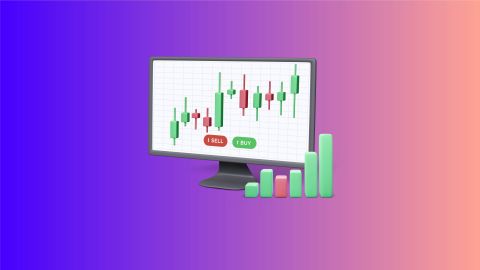When businesses raise money through a mix of equity and debt, it’s important to know how much that funding actually costs. The Weighted Average Cost of Capital (WACC) helps calculate this cost by combining the expense of both types of capital. It gives companies and investors a clear picture of whether an investment or project is financially worthwhile, making it a key tool for better decision-making.
What is Weighted Average Cost of Capital (WACC)
Weighted Average Cost of Capital (WACC) is the average rate a company pays to raise money through both debt and equity. It reflects the overall cost of financing and helps in making smart investment and funding decisions. WACC takes into account the market value of each funding source and the cost tied to it, giving businesses a clear picture of how much it costs to support growth and daily operations.
WACC formula
The WACC formula is a combination of several parameters, written as follows:
WACC = (E/V × Re) + ((D/V × Rd) × (1 − T))
Where:
- E represents the market value of the business's equity.
- V represents the whole value of capital, including stock and debt.
- Re indicates the cost of equity.
- D represents the market value of the business's debt.
- Rd represents the cost of debt.
- T represents the tax rate.
Now, let us go deeper into the technicalities of determining the cost of equity, a critical component of the WACC framework.
Calculating the cost of equity
A critical part of WACC is its estimate of the cost of equity, which is an essential component in the financial equation. The cost of equity is the return sought by investors or the rate of return that a firm must earn on its investments. Two notable models, the Capital Asset Pricing Model (CAPM) and the Dividend Capitalization Model, provide different approaches to calculating this key indicator. While both methodologies have complexities and flaws, they give useful information on the projected returns and growth prospects for stock investments.
The capital asset pricing model uses the formula below to calculate the expected return on investment:
E(Ri) = Rf + βi × (E(Rm)−Rf)
Here,
- E(Ri) represents the expected return on investment.
- Rf stands for the risk-free rate of return, which is similar to the interest rate on a risk-free investment like government bonds.
- Beta risk (βi) measures an investment's volatility in comparison to the market as a whole.
- (E(Rm)−Rf) represents Market Risk, which is the overall risk of investing in the stock market, or the expected return on investment less the risk-free rate.
On the other hand, the dividend capitalisation model provides the cost of equity using the formula:
Re=(D1/P0) + g
Where:
- Re stands for the cost of equity.
- D1 denotes the yearly dividend per share, which reflects the current price of one share of a company's stock.
- g represents the Dividend Growth Rate, which denotes the historical growth rate of a company's dividends.
WACC vs Required Rate of Return (RRR)
While both WACC and RRR help assess the attractiveness of an investment, they serve different purposes and perspectives:
1. What they measure
WACC looks at the overall cost for a company to raise capital from both equity and debt holders. It represents the average return expected by all investors in the company.
RRR, on the other hand, reflects the minimum return an individual investor expects from a specific investment or project. It’s investor-focused, not company-focused.
2. How they’re calculated
WACC is calculated using a weighted formula that includes:
Cost of equity
Cost of debt
The proportion of each in the company’s capital structure
RRR can be determined through different methods. A common approach is the Capital Asset Pricing Model (CAPM), which considers:
The risk-free rate
The stock’s beta (volatility)
Expected market return
How to calculate WACC in Excel: Step-by-step
Calculating WACC in Excel is simpler than it sounds if you follow this process:
Step 1: Gather Financial Data
Market value of equity and debt
Dividend per share
Current stock price
Interest rate on debt
Company’s tax rate
Step 2: Determine Capital Structure Proportions
Equity Proportion = Equity / (Equity + Debt)
Debt Proportion = Debt / (Equity + Debt)
Step 3: Calculate Cost of Equity
Use the Dividend Discount Model:
Cost of Equity = (Dividend per Share / Current Stock Price) + Growth Rate
Or use CAPM, if appropriate.
Step 4: Compute Proportional Cost of Equity
= Equity Proportion × Cost of Equity
Step 5: Find Cost of Debt
Use the average interest rate the company pays on its borrowings.
Step 6: Adjust for Tax
After-Tax Cost of Debt = Cost of Debt × (1 – Tax Rate)
Step 7: Compute Proportional Cost of Debt
= Debt Proportion × After-Tax Cost of Debt
Step 8: Add to Get WACC
WACC = Proportional Cost of Equity + Proportional Cost of Debt
Limitations of WACC
While WACC is a powerful financial tool, it comes with certain drawbacks:
1. Complex to calculate accurately
WACC depends on multiple moving parts—market values, interest rates, taxes, growth rates—all of which can change frequently. If a company has different types of debt at different rates, it makes the process more complicated.
2. Not ideal for high-risk projects
WACC assumes a stable risk profile. However, for high-risk projects, a single company-wide WACC may underestimate the true cost of capital. In such cases, models like Adjusted Present Value (APV) are often more appropriate.
Practical utility of WACC
WACC has far-reaching implications beyond basic numerical computation; it acts as a compass for strategic finance and investment decisions. Companies may set a route for long-term growth and value creation by weighing the costs of debt versus equity financing. Furthermore, investors and creditors use WACC as a litmus test to determine the viability of organisations for investment or loan financing. A greater WACC percentage suggests higher financing costs, thus reducing value generation and making stakeholders consider alternate options.
Conclusion
In the complex world of finance, where uncertainty looms large and decisions have significant consequences, the weighted average cost of capital emerges as a guiding light, showing the route to responsible financial management and informed decision-making. By carefully analysing the cost of financing and optimising the debt-equity mix, stakeholders may confidently negotiate the unpredictable waters of the financial landscape, generating both resilience and success.




